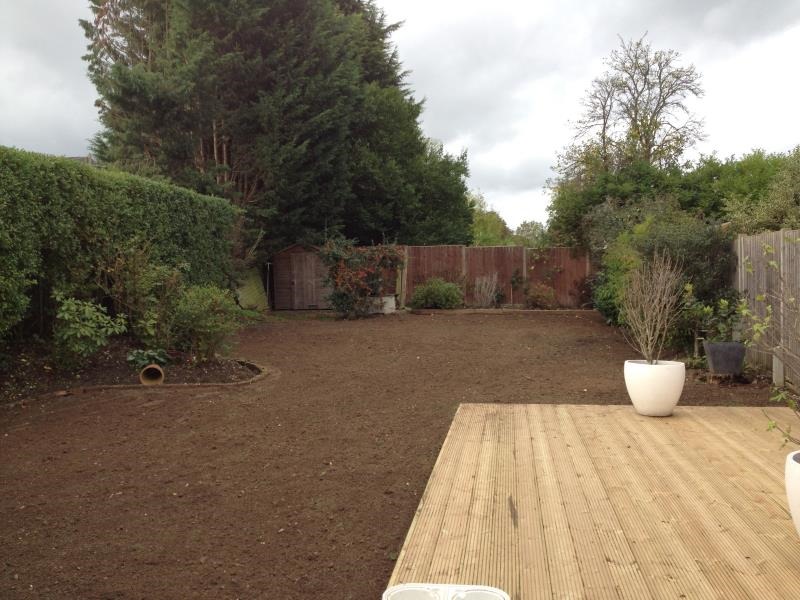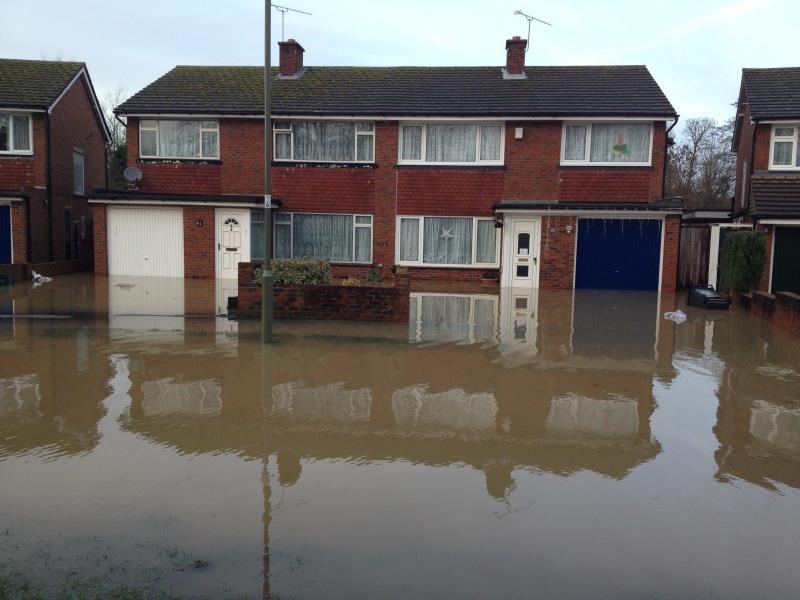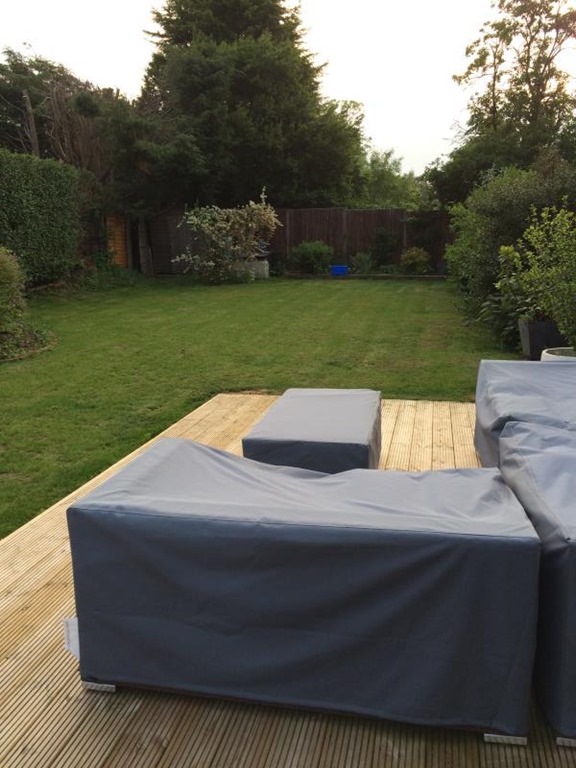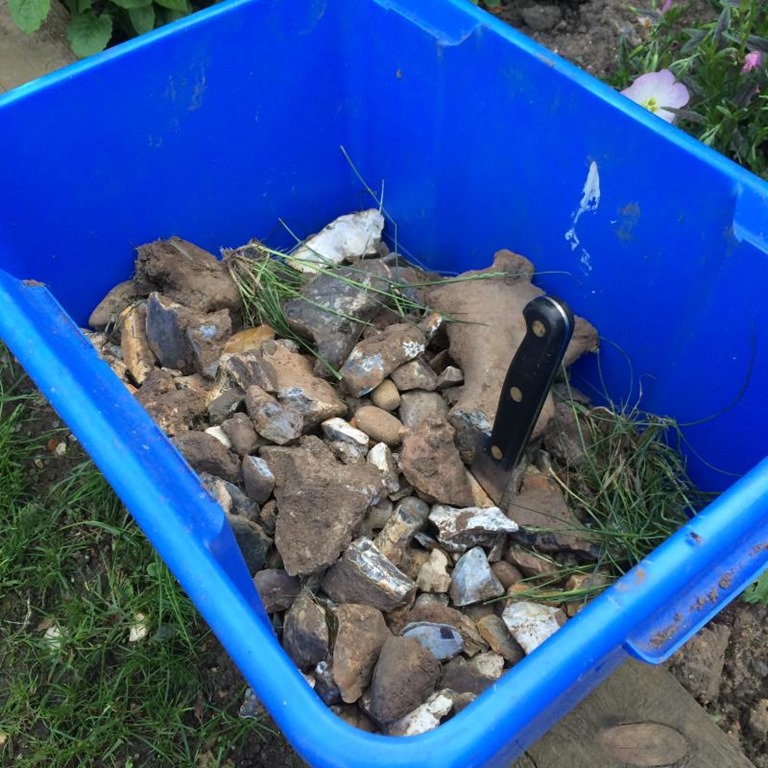(Re)Learning Lessons – Why My Lawn Resembles Your Project
Reading time: 7 minutes.I love well kept lawns. Seeing a lush green lawn, freshly cut, with stripes that look like they were measured out with a set square and ready for the cup final at Wembley is a beautiful thing. The grass in my back garden has never looked like that. I am beginning to wonder if it ever will. But we’ll keep trying.
First some history
We’ve lived in this house for almost 15 years. During that time, the back garden has seen an awful lot of change. At first the garden was very overcrowded, with large trees and bushes breaking up the space into different areas. There was a small wooden playhouse on stilts under an old apple tree and a huge fir tree. The garden sheds were hidden by foliage at the end of the garden. Other trees flanked the right and left side of the garden. Over the years, we’ve had an extension added to the house, pulled down and rebuilt the playhouse and then pulled it down again, remove many of the trees, and reshaped every flower border. In fact, as the pictures below show, the garden we have now retains almost none of the original characteristics of the original garden design. Except for one thing. The lawn. That grass has always been there.
Weeds. Grass Rot?
Over the course of the 15 years, the grass had deteriorated. We finally decided it was time to act at the end of last summer. I am not a particularly good gardener, and despite regularly mowing the lawn, the lack of any other kind of care had meant that the weeds had completely taken over the lawn. Dandelions outnumbered grass blades 2 to 1 it seemed. Over time, without the proper care, the grass had turned to meadow.
Big Up Front Redesign
At this point, trying to pull-up or kill the individual weeds seemed fruitless. There was simply too much damage. We decided that the simplest and easiest solution was to cut the turf off the top of the lawn (weeds-and-all), level the soil underneath, add some top-soil and plant grass seed. With a whole winter and spring for the grass to grow, we were gleefully imagining running barefoot through the lush green grass when April rolled around, using the stripes as lanes for running races, and all while we laughed joyfully at the wonder of it all.
You have to love those plans, don’t you? We certainly knew what success looked like, and we knew exactly how to get there. Onwards!
Sprinting With A Turf Remover
So, since I knew that my limited skillset wasn’t going to cut it, we turned to our gardener to embark on the project. One cold day in late October, he came to our house with a machine that removes turf, removed the turf, spread the soil, spread the seed and left. Sprint one of the project was over very quickly. It seemed easy. “You should see some grass appearing within 2-3 weeks, and it should grow pretty quickly.”

“Honey, Where’s My Grass?”
Well, it turned out that the gardener was a little bit too optimistic. The grass didn’t quite shoot up as promised – although patches were starting to appear after a couple of months. We even had him come back and spread more seed a couple of times in an attempt to accelerate the process, presuming that as spring rolled around, the grass would kick in. Not ideal, but nothing to worry about yet. The barefoot running races and the joyful laughing were still possible.

Stormy Weather
It rained. For the whole winter, it rained. A LOT. I mean, flooding-entire-neighbourhoods-in-the-lower-lands-a-LOT. Very luckily, we live on slightly higher land, but the force of the rain coming down and then the large volume of water sweeping across the slight left-right hill of the garden had an interesting effect.

The soil and seeds were moving, in some cases washed away. Not unsurprising perhaps? But worse, the soil washing away was leaving stones on the surface – many many stones. At the time, I didn’t consider the impact this would later have, but really I should have. It is pretty obvious!
Stones
Fast forward to now, June 1st. We are still not running barefoot, nor having running races. The grass has begun to grow in reasonably well, albeit a bit patchy, but the stones are everywhere. They’ve made it impossible to walk out there without shoes on, and even if the grass does grow to be thick and lush, without effort the stones would be a problem.

So I spent about 2 hours this morning on my hands and knees picking up every rock I could see. Many are embedded in to the surface, so I am use a small knife to lever them out. For the patches of lawn I have done, walking there now is an almost pleasant experience in bare feet. Over the next couple of weeks, I’ll diligently repeat the process until I’ve pulled up all of rocks, and the lawn is once again simply “dirt and grass”.
Still Not On-The-Level Though
Even then, I’ll still have work to do. The wet weather move the soil around. The lawn is far from level. A combination of re-soiling and re-seeding and using a really heavy roller is going to be needed to remove the humps and fill the holes. My hope is that by NEXT April, the laughing, running and joy can begin.
So How Is My Lawn Relevant To Your Project?
There are a number of parallels that I can draw to projects at work.
Lawn Rot == Code Rot: if you aren’t taking care of your code, eventually you will get to the point where it becomes unmaintainable. At best it just remains painful and ugly to work with, at worst you get to the point where you have to throw it away. If, every time I had mown the lawn (or checked out code) I’d have cut and pulled up the dandelions (or perhaps refactored, added some tests, cleaned up), then my lawn (code) would have stayed reasonably clean and I might have been able to achieve my goals with other less drastic measures.
Basic Maintenance Isn’t Enough: actually, even if I had done all of that, it is highly likely I would still have had a poor quality lawn. There are techniques to learn and approaches to implement that are required to keep a lawn looking great. I should have learned these, and practiced them over a long period of time, in order to get better at maintaining my lawn. The assumption that simply cutting it every few weeks would be enough was foolish.
Progress Doesn’t Follow The Plan: whilst the process of getting the new grass seed laid seemed simple, the estimates for growing time were very wrong, and in fact, we needed to redo some of the work a few different times in order to get the results we expected. We probably couldn’t have known this up front, so watching closely and reacting to the current conditions was important. We are still doing this now.
Storms Happen. Floods Happen. Stones Happen: on top of the fact that the planned approach didn’t work out as expected, external factors played a big part in the lack of a successful outcome so far. The wet weather created two major issues: the uneven surfaces and the stones. Both of those things are requiring extra work and cost to rectify, and once again we are having to respond very much to the situation as it has unfolded over time.
The Moral Of The Story?
Quality matters, keep it high at all times. While planning is useful, plans often are not; you should always expect to have to inspect and adapt as your project progresses. Your project is always susceptible to outside forces, and often you need to change your approach as a result. Embrace the change and work hard to turn it into success. Often, you need to get on your hands and knees and do mind-numbing back-breaking work in order to keep your project on track – maybe not literally, but certainly figuratively.

If you don’t do these things, you’re as dumb as a box of rocks. Just like the box of rocks I’ve ended up with as a result of digging them up from my lawn today.
